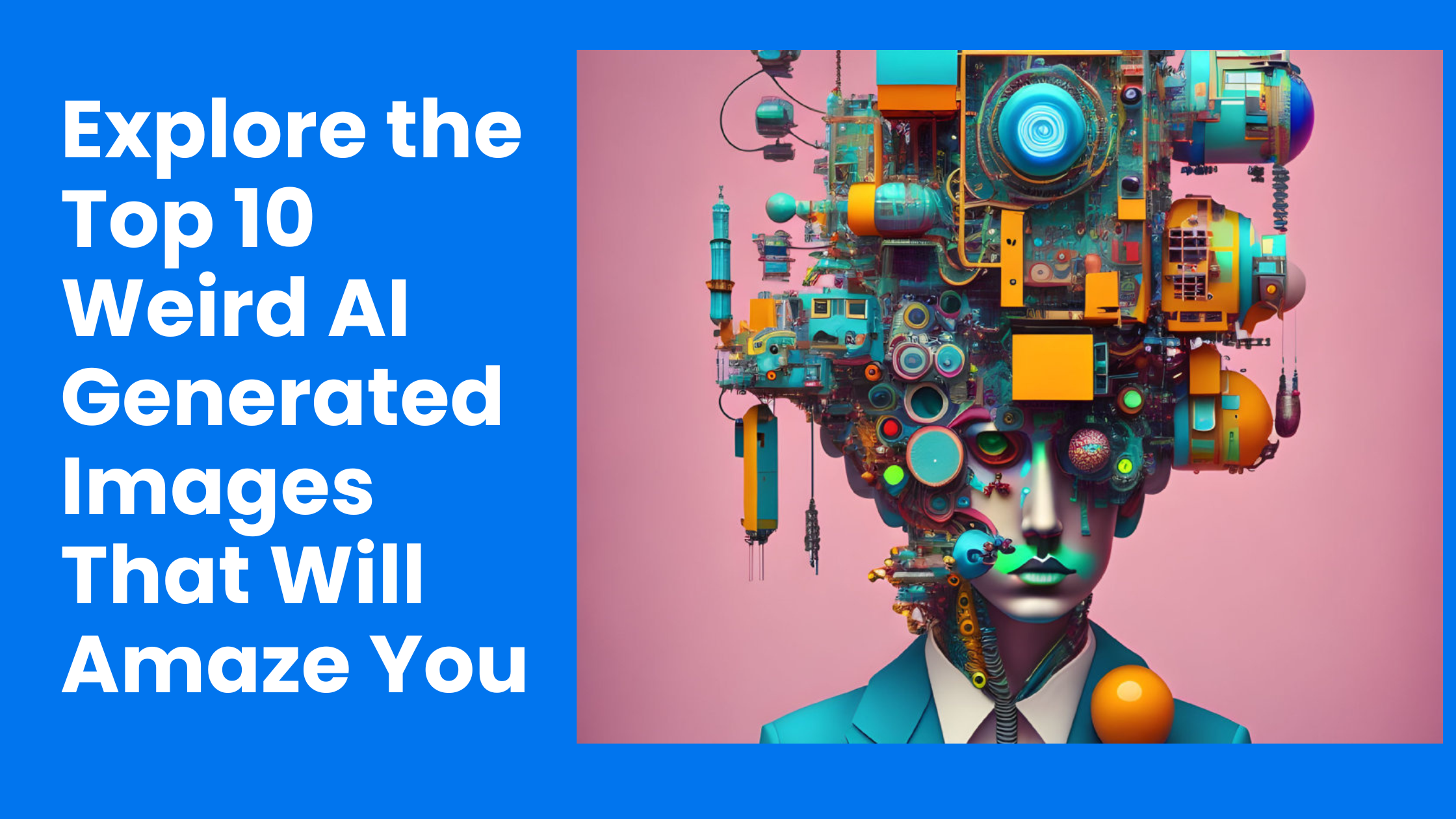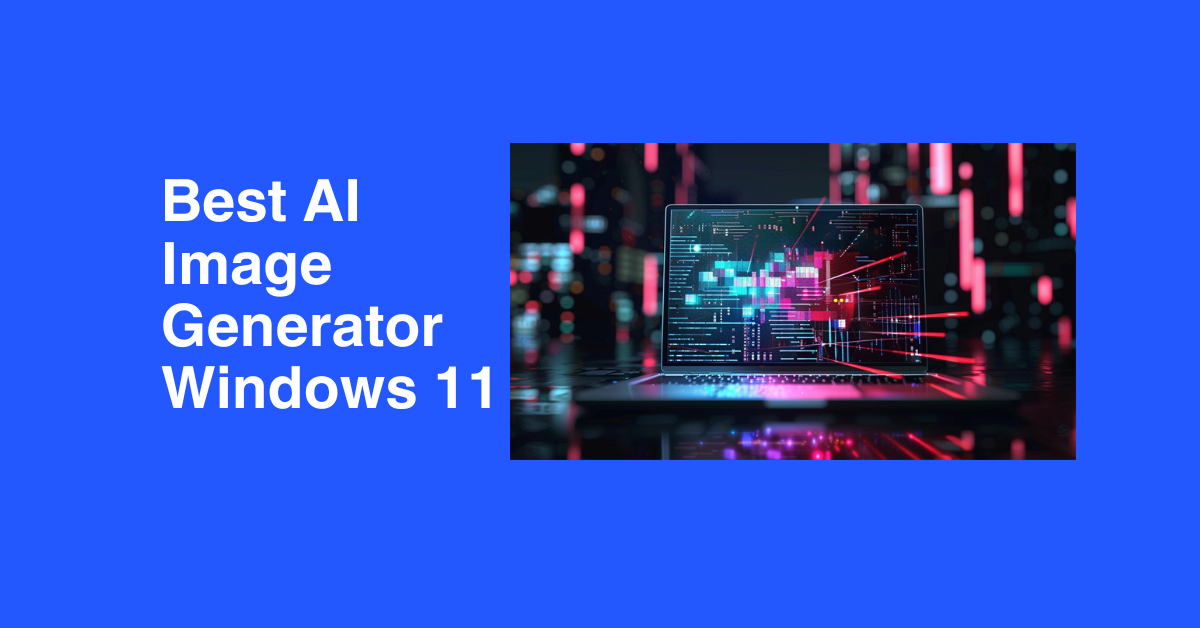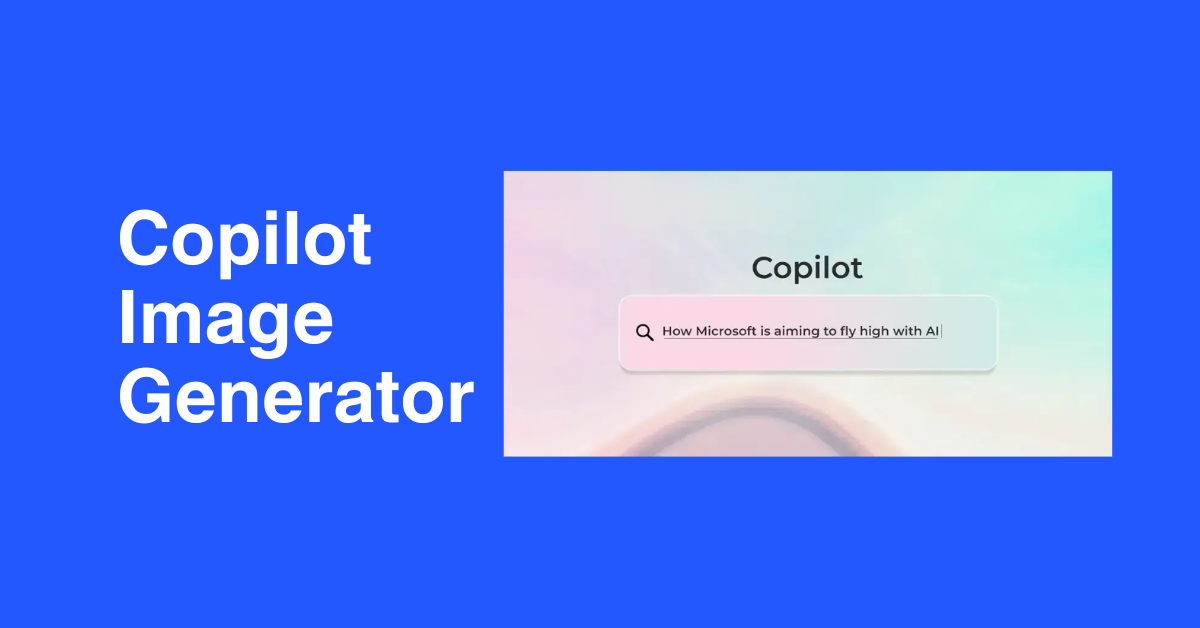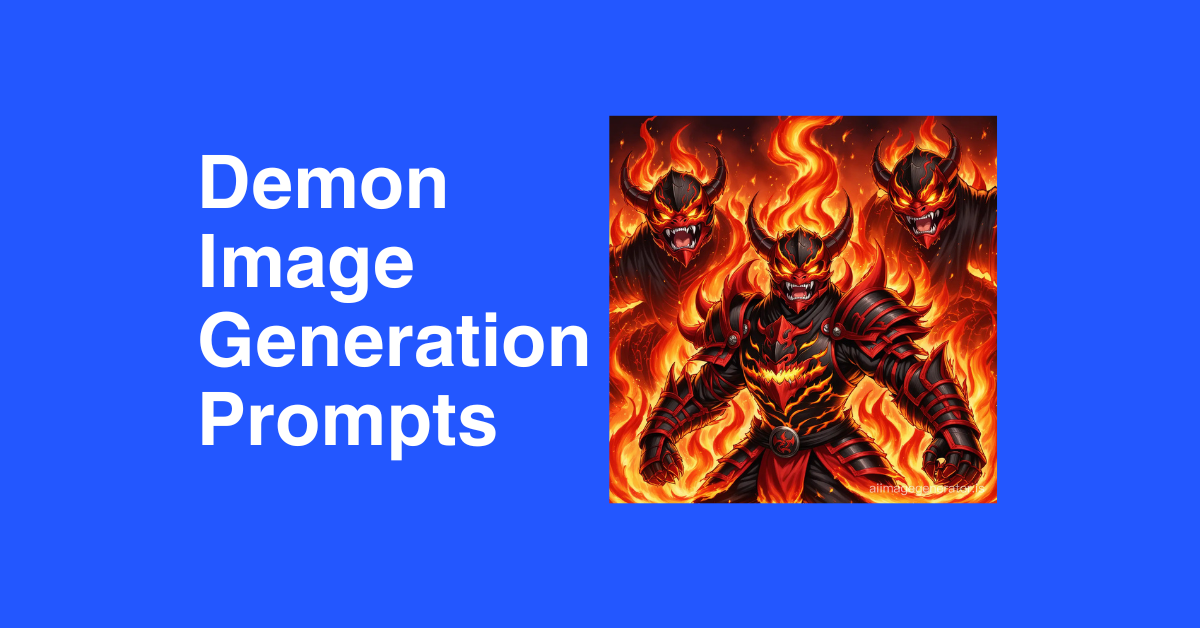
Explore the Top 10 Weird AI Generated Images That Will Amaze You
- Image Generators
- November 1, 2024
- No Comments
In recent years, the realm of artificial intelligence has expanded to touch nearly every aspect of our lives, including the world of creative arts. From generating music and poetry to creating stunning visual art, AI has emerged as a powerful tool for artists and technologists alike. However, one particularly captivating phenomenon has captured the public’s imagination: weird AI generated images. These bizarre visuals, often teetering on the edge of reality, invite viewers into a surreal world that challenges our perceptions of creativity. In this blog post, we will delve deep into the uncanny valley of AI-generated images, exploring the bizarre, humorous, and surreal aspects of this emerging art form while examining its ethical implications and future potential.
The Uncanny Valley of Weird AI Generated Images: When Realism Goes Wrong
The concept of the uncanny valley refers to the unsettling feeling people experience when confronted with entities that are almost human-like but not quite there. This phenomenon is especially relevant in the discussion of AI-generated images, where attempts at realism can sometimes result in strikingly eerie creations that provoke confusion and discomfort.
Understanding the Uncanny Valley
The uncanny valley theory was proposed by Japanese roboticist Masahiro Mori in the 1970s. It hypothesizes that as robots become more human-like in appearance, our emotional response to them becomes increasingly positive—until they reach a certain point, after which their almost-human look elicits feelings of eeriness or disgust.
This idea extends to AI-generated images as well. When an AI algorithm attempts to create images of humans, landscapes, or objects that closely mimic reality, it may fail to capture subtle nuances, leading to visuals that possess an odd or unnatural quality. These images can evoke a sense of disquietude, making us question what is real and what is artificially constructed.
The Struggle for Realism
AI models such as Generative Adversarial Networks (GANs) have made significant strides in producing high-quality imagery. Yet, they still grapple with nuances of human expression and emotion. Occasionally, the manifestations of these algorithms yield results that exemplify the uncanny valley effect—such as distorted facial features, awkward poses, or backgrounds that feel just a touch off.
This quest for realism raises interesting questions about the limits of machine creativity. On one hand, the pursuit of perfect imitation drives innovation; on the other hand, the resultant weirdness unveils a deeper understanding of what it means to be human. As AI ventures into the realm of artistic expression, it forces us to confront our definitions of beauty and imperfection.
Embracing the Eerie
The uniqueness of weird AI generated images has sparked new discussions around aesthetics. While some may find these images unsettling, others appreciate their quirks and humor. This tension between discomfort and delight encapsulates the essence of contemporary art—a space where rules are bent and boundaries are pushed.
As artists and enthusiasts embrace the awkwardness of AI-generated visuals, the weird becomes an asset. Instead of striving for flawless perfection, creators can use the strange outcomes as inspiration for further exploration. In this way, the uncanny valley can serve as a catalyst for new forms of artistic expression, reflecting our shared anxieties and curiosities about technology.
Beyond the Mundane: Exploring the Bizarre and Surreal in AI Art

One of the most fascinating aspects of AI-generated art is its capacity to venture far beyond mundane representations of reality. With the ability to combine disparate elements and create imaginative scenarios, AI opens the door to an entirely new realm of the bizarre and surreal.
The Surreal Landscape of AI Creativity
When fed with vast amounts of data, AI can generate outputs that intertwine the familiar with the extraordinary. These peculiar combinations stimulate viewers’ imaginations and challenge preconceived notions of artistic boundaries.
For example, consider an AI-generated image that juxtaposes a cat with a teapot, merging animal and inanimate object in a way that defies logic yet captures attention. Such imagery invites viewers to ponder the relationships between subjects and challenge conventional categorizations—an endeavor that resonates deeply with the ethos of surrealism.
Breaking Free from Traditional Constraints
Artists have long sought ways to break free from traditional forms of representation. AI-generated art offers a unique opportunity to escape the confines of human intention and explore new territories of creativity. Algorithms can analyze patterns, discover unexpected correlations, and synthesize ideas that may not have been previously conceived.
This innovative process allows for a radical departure from established norms, enabling artists to experiment with unconventional styles and themes. Instead of following a linear narrative, AI-generated images embrace multiplicity, presenting numerous interpretations to engage viewers in conversation about meaning and perception.
The Viewer’s Role in Interpretation
The bizarre nature of AI art necessitates active engagement from viewers. Unlike traditional art, which often conveys a singular message or emotion, AI-generated works invite multiple interpretations. Each observer brings their unique experiences, emotions, and perspectives to the artwork, enriching the dialogue surrounding its meaning.
This participatory aspect fosters a greater appreciation for the unpredictable nature of creativity. By challenging viewers to confront the strangeness of AI-generated images, artists can encourage introspection and self-discovery, ultimately enhancing the impact of their work.
AI’s Artistic Misinterpretations: Unveiling the Hidden Humor in Generated Images

One of the delightful surprises of weird AI generated images lies in the humorous misinterpretations produced by these algorithms. As AI tools attempt to replicate human creativity, they occasionally stumble into absurd territory, resulting in visuals that provoke laughter and amusement.
The Quirky Outcomes of Machine Learning
Machine learning relies on training data to refine its understanding of various concepts, but it doesn’t always perceive those concepts as a human would. As a result, AI can generate wildly inaccurate representations that border on the ridiculous. This absurdity can lead to unexpected gems that spark joy and curiosity.
Consider an instance where an AI model tries to create a landscape painting but inadvertently combines elements from different ecosystems—tropical beaches with snowy mountains or desert cacti alongside lush forests. The unforeseen collision of disparate environments creates an entertaining mosaic that highlights the limitations of AI’s understanding.
The Comedy of Errors
Many artists have embraced the comedic potential of AI-generated images, using them as a source of inspiration for satirical commentary on contemporary culture. The intentional creation of “mistakes” serves to remind us of the fallibility inherent in both machine and human creativity.
By showcasing the quirky outcomes of AI, artists can offer playful critiques of societal norms, technological advancements, and even the art world itself. The strange and humorous aspects of AI-generated visuals allow for a lighthearted exploration of serious themes, inviting viewers to reflect on their own experiences and beliefs.
Finding Joy in the Unexpected
Humor has a unique ability to connect people and foster understanding. In the case of weird AI generated images, the bizarre tendencies of AI invite shared laughter and camaraderie among viewers. These visuals become a vehicle for exploration and conversation, transcending barriers of language and culture.
By leaning into the humor found within AI-generated artworks, artists can cultivate a sense of community and connection among audiences. The goofy nature of these creations reminds us that creativity need not always be solemn or serious—it can thrive in playfulness and spontaneity.
From Dreams to Digital Canvas: How AI Is Transforming the Landscape of Art
The intersection of dreams and technology is reshaping the landscape of art. AI-generated images provide a glimpse into new creative possibilities, allowing artists to transcend their limitations and explore realms previously thought unattainable.
The Collaborative Nature of AI Art
Instead of replacing human artists, AI acts as a collaborator—an ally that enhances the creative process. Tools like DALL-E, DeepArt, and RunwayML enable artists to manipulate, adjust, and remix their work in profound ways. Through collaboration with AI, artists can dream bigger and push their artistic boundaries.
While traditional artistry often requires immense skill and time, AI can facilitate rapid experimentation. Artists can input concepts and receive instant feedback, fostering a dynamic relationship between human creativity and machine learning. This collaborative approach encourages artists to take risks and explore novel ideas without fear of failure.
The Transformation of Inspiration
The sheer vastness of possibilities presented by AI-generated images transforms the very notion of inspiration. No longer limited to personal experiences, artists can draw from a seemingly infinite pool of automated creativity. By curating datasets from diverse sources, AI can produce visuals that integrate a multitude of influences, expanding the scope of artistic inspiration.
Moreover, artists can harness the power of AI to create entirely new genres. The fusion of traditional techniques with cutting-edge technology gives rise to hybrid forms of art that resonate with contemporary audiences. The digital canvas becomes a playground where imagination knows no bounds.
Rethinking the Art Experience
As AI-generated images gain traction, they compel us to rethink how we experience and interact with art. No longer confined to galleries and museums, these creations flourish in digital spaces, inviting broader audiences into the world of artistic expression.
Online platforms allow for diverse viewers to engage with artworks, share their thoughts, and participate in conversations around meaning and interpretation. The accessibility of AI-generated art democratizes creativity, empowering anyone with internet access to participate in artistic exploration.
The Rise of the AI Artist: Can Machines Truly Replicate Human Creativity?
With the increasing sophistication of AI technologies, the question arises: can machines truly replicate human creativity? The emergence of the so-called “AI artist” challenges established ideas about authorship and originality in the creative realm.
Redefining the Concept of Authorship
Traditionally, the act of creating art has been synonymous with the individual artist—the person behind the brush, the pen, or the camera. However, as AI systems generate compelling images, the distinction between creator and creation begins to blur.
AI algorithms, drawing from countless data points and styles, produce visuals that can evoke strong emotional responses. The question then arises: should we credit the machine as the artist or the human programmer who designed the algorithm? This ambiguity sparks debates about ownership, authorship, and the very definition of creativity itself.
The Complexity of Creative Intent
At the heart of human creativity lies intent—a conscious decision to convey a message, tell a story, or explore an emotion. While AI can generate visually stunning outputs, it lacks the intrinsic motivation and emotional depth that accompanies human artistry.
The absence of intent does not diminish the value of AI-generated art; rather, it shifts the focus onto the collaborative potential between human and machine. As creators leverage AI’s capabilities, they embark on a journey that marries technique with intuition, resulting in artworks that reflect both human sensibilities and machine logic.
Embracing the Evolution of Creativity
The rise of AI artists compels us to reimagine the landscape of creative expression. Rather than perceiving AI as a threat to human ingenuity, we can view it as a partner that redefines the boundaries of what’s possible.
This evolution prompts us to embrace a more inclusive definition of creativity—one that encompasses the interplay between human insight and technological advancement. As we stand at the precipice of this new frontier, we can celebrate the richness that emerges from collaboration between human and machine.
Beyond the Aesthetics: Exploring the Ethical Implications of Weird AI Generated Images
As weird AI generated images proliferate, ethical considerations come to the forefront of discussions surrounding AI art. The growing presence of technology in creative domains raises questions about authenticity, cultural appropriation, and the impact of algorithmic bias.
The Ethics of Artistic Representation
One of the foremost ethical dilemmas relates to the representation of marginalized voices in AI-generated art. AI algorithms are trained on existing datasets, which may perpetuate biases present in the data. When AI generates images that reflect stereotypes or exclude underrepresented communities, it can inadvertently reinforce harmful narratives.
The responsibility lies with artists and developers to ensure that datasets are diverse and inclusive, promoting fair representation in AI outputs. By fostering a culture of awareness and sensitivity, creators can contribute to a more equitable artistic landscape that honors the richness of human experience.
Intellectual Property Concerns
Another pressing issue revolves around intellectual property rights. As AI-generated art gains popularity, questions emerge regarding ownership and copyright. If an AI produces a compelling image that catches the eye of a gallery owner, who retains the rights to that artwork—the artist who programmed the algorithm, the company that developed the software, or the machine itself?
Navigating the complexities of intellectual property in the age of AI requires careful consideration and legal frameworks that adapt to these evolving realities. Engaging stakeholders—including artists, technologists, and policymakers—will be crucial in shaping guidelines for ethical practices in AI art.
The Social Responsibility of AI Creators
Just as artists bear the responsibility of their work, AI developers must also acknowledge the social implications of their creations. The decisions made during the algorithm design process can significantly influence the types of art generated and their societal impact.
It is essential for AI creators to engage in ethical reflection and consider the potential consequences of their technologies. By prioritizing transparency and accountability, developers can help foster trust and integrity in the ever-evolving world of AI-generated art.
AI Art Gone Wild: A Look at the Most Bizarre and Intriguing Images
As we explore the realm of weird AI generated images, it’s impossible not to encounter some truly wild and intriguing creations. The bizarre outputs of AI models captivate audiences worldwide, sparking both fascination and laughter.
The Peculiar Portraits of AI
Among the most jarring manifestations of AI art are the portraits generated by neural networks. Often, these images feature uncanny faces with distorted features, mismatched eyes, or odd expressions that defy logic.
These peculiar portraits reveal the limitations of AI technology while simultaneously reflecting our own interpretations of beauty and identity. Audiences are drawn to the strangeness of these images, which prompt contemplation about the nature of self-representation and the attributes that define humanity.
Outlandish Landscapes and Fantastical Realms
In addition to bizarre portraits, AI excels at crafting wildly imaginative landscapes that blend elements of reality and fantasy. These surreal environments may feature floating islands, impossible architecture, or vibrant colors that seem to leap off the canvas.
The allure of these fantastical realms captivates viewers, inviting them to escape into worlds unbound by the laws of physics or logic. These images challenge our understanding of space and time, encouraging exploration and engagement with the limitless possibilities of artistic expression.
Amusing AI Mashups
Among the most entertaining artifacts of AI creativity are amusing mashups that combine unrelated subjects into whimsical compositions. Imagine a giraffe wearing a top hat, a slice of pizza with wings, or a fish riding a bicycle—these playful images ignite laughter and spark the imagination.
Through these outlandish juxtapositions, AI invites us to see the world through a new lens. The humor embedded in these bizarre creations transcends cultural boundaries and fosters connections among viewers who share in the joy of the unexpected.
Unveiling the Processes: How AI Algorithms Generate Strange and Wonderful Images
To truly appreciate the phenomenon of weird AI generated images, it’s essential to understand the underlying processes that drive their creation. Technological advancements in machine learning and neural networks have paved the way for remarkable innovations in AI art.
The Role of Training Data
At the core of AI-generated images lies the role of training data. Algorithms learn by analyzing vast datasets comprised of existing artwork, photographs, and visual content. Through exposure to diverse examples, AI begins to identify patterns, styles, and elements that inform its generation processes.
The choice of training data has significant implications for the output. A dataset primarily comprising classical paintings will yield different results than one focused on contemporary street art. Thus, curating rich and varied data is paramount to producing intriguing and innovative AI art.
The Mechanics of Generative Adversarial Networks (GANs)
Generative Adversarial Networks (GANs) have revolutionized the field of AI-generated images. These architectures consist of two neural networks: the generator and the discriminator.
The generator creates images based on learned patterns, while the discriminator evaluates the generated images against real ones. As both networks compete, the generator refines its output to produce increasingly realistic and coherent visuals. This iterative process culminates in the creation of images that often possess surprising and delightful qualities.
Fine-Tuning and Iteration
After initial generation, artists and developers can fine-tune AI outputs to achieve desired stylistic effects. Techniques such as transfer learning allow creators to modify the behavior of the AI to better align with their artistic vision. By adjusting parameters and guiding the algorithm, artists can steer the machine toward specific themes or aesthetics.
This collaborative approach showcases the adaptability of AI tools, allowing artists to marry their intuition with computational power. The iterative nature of this process results in an ongoing dialogue between human creativity and machine learning.
The Future of AI Art: Will Machines Become Our Artistic Collaborators?
As we peer into the future of AI-generated art, we cannot help but wonder how this burgeoning field will evolve. The prospect of machines becoming our artistic collaborators invites both excitement and speculation about the possibilities that lie ahead.
Expanding Creative Horizons
The integration of AI into the creative process promises to expand artistic horizons in unprecedented ways. As technology continues to advance, we can anticipate even more sophisticated algorithms capable of producing intricate and meaningful art.
With AI as a collaborator, artists will have the opportunity to explore uncharted territories of creativity, delving into genres and styles that were previously inaccessible. The boundaries of artistic exploration will blur, giving rise to innovative forms of expression that enrich our cultural landscape.
Embracing Diversity and Collaboration
The future of AI art holds tremendous potential for diversity and collaboration across disciplines. As artists from various backgrounds and cultures engage with AI technologies, the resultant artworks will reflect a rich tapestry of influences and ideas.
Furthermore, AI art can encourage interdisciplinary partnerships between technologists, designers, and creatives, fostering a spirit of collaboration that enhances problem-solving and innovation. By breaking down silos, we can cultivate an environment that celebrates diversity and embraces the collective power of creativity.
Navigating Challenges and Responsibilities
While the future of AI art brims with potential, it also presents challenges that warrant careful consideration. As we navigate the evolving landscape, artists and technologists must remain vigilant about the ethical implications of their work.
Engaging in open dialogues about representation, bias, and ownership will be crucial in shaping responsible practices in AI art. By addressing these concerns proactively, we can ensure that the future of AI-generated images remains inclusive, equitable, and reflective of the myriad voices that comprise our global community.
From Pixel to Perception: Exploring the Psychological Impact of AI-Generated Images
Beyond their aesthetic qualities, weird AI generated images wield psychological power that warrants exploration. The impact of these visuals on perception, emotion, and cognition provides fascinating insights into the intersection of technology and human experience.
The Emotional Resonance of AI Art
AI-generated images have the ability to evoke a wide range of emotional responses, often transcending traditional artistic boundaries. The bizarre and surreal nature of these works can provoke feelings of joy, confusion, nostalgia, or even unease.
As viewers engage with AI-generated visuals, they may find themselves navigating complex emotional landscapes that mirror their own experiences. The uncanny qualities of these images invite introspection, allowing individuals to explore their own reactions and interpretations in a safe and imaginative space.
The Cognitive Engagement with AI Creations
The strange nature of AI-generated art also stimulates cognitive engagement, prompting viewers to question their understanding of reality and creativity. Encountering images that challenge conventional logic encourages curiosity and critical thinking, driving spectators to explore the underlying mechanics of AI-generated content.
The process of decoding these visuals fosters a sense of agency, as viewers actively participate in constructing meaning. This interactive relationship enhances the impact of AI art, transforming passive observation into an engaging and enriching experience.
Reflecting Societal Themes
In addition to individual psychological responses, AI-generated images often reflect broader societal themes and anxieties. Bizarre visuals can serve as a mirror, revealing contemporary concerns related to technology, identity, and the human condition.
By engaging with these themes, audiences are encouraged to reflect on their relationship with technology and the evolving nature of creativity. This transformative engagement underscores the importance of AI-generated art as a catalyst for meaningful discourse and social reflection.
Conclusion
The era of weird AI generated images invites us to reconsider the boundaries of creativity, pushing the envelope of what art can be. These bizarre and intriguing visuals provoke thought, laughter, and introspection, compelling us to confront our definitions of beauty, originality, and the very nature of artistry itself.
As we continue to explore this fascinating intersection of technology and human expression, we can celebrate the rich tapestry of voices, ideas, and emotions that arise from the collaboration between human artists and AI. The future of AI-generated art holds immense promise, offering new opportunities for innovation, collaboration, and exploration of the complexities of the human experience. As we stand on this threshold, we are reminded that creativity is not solely confined to the hands of humans—it is a dynamic force that flourishes through collaboration, imagination, and the wonders of technology.
Looking to learn more? Dive into our related article for in-depth insights into the Best Tools For Image Generation. Plus, discover more in our latest blog post on AI Image Generation. Keep exploring with us!
Related Tools:
Image Generation Tools
Video Generators
Productivity Tools
Design Generation Tools
Music Generation Tools
For more AI tools, explore all categories by clicking here.





